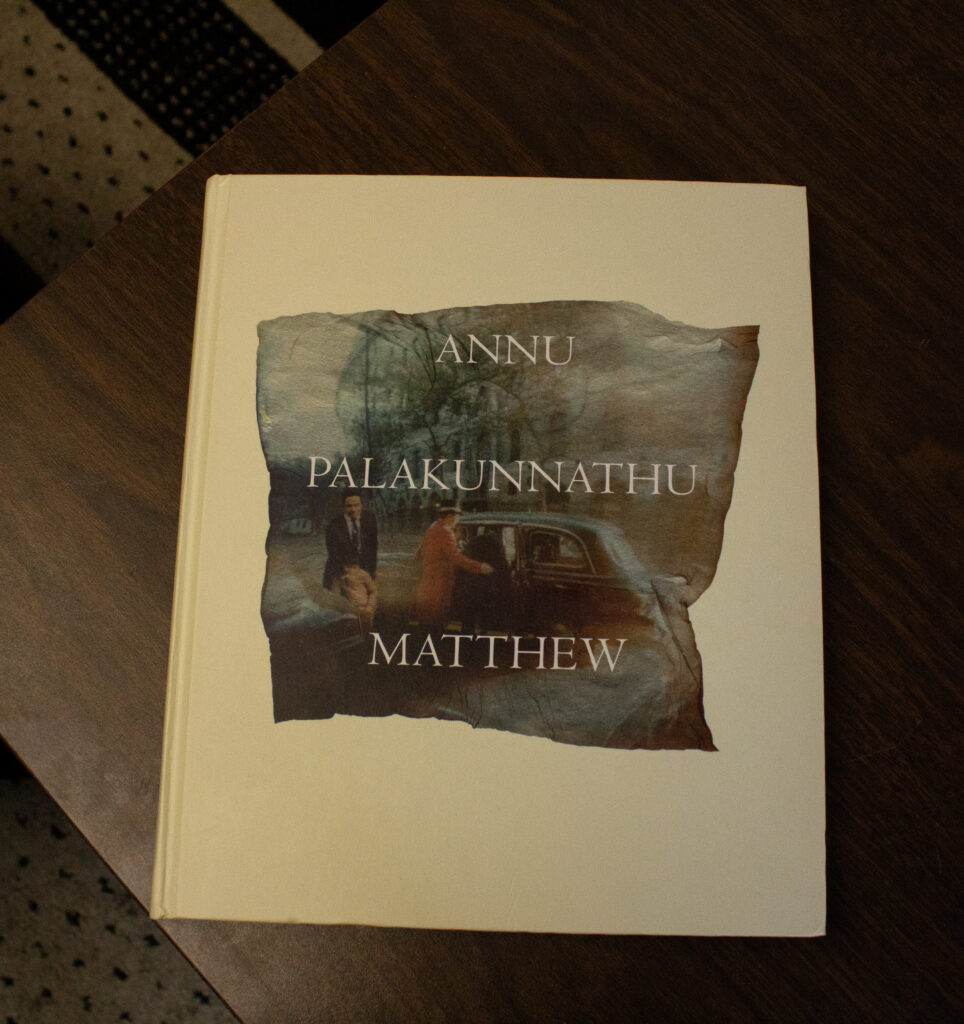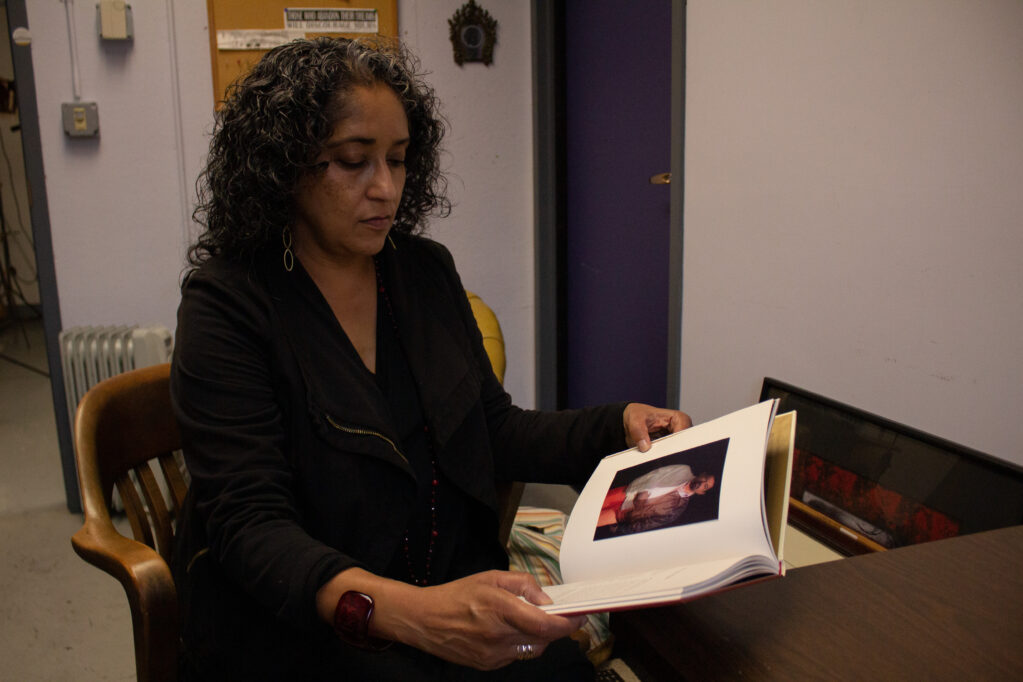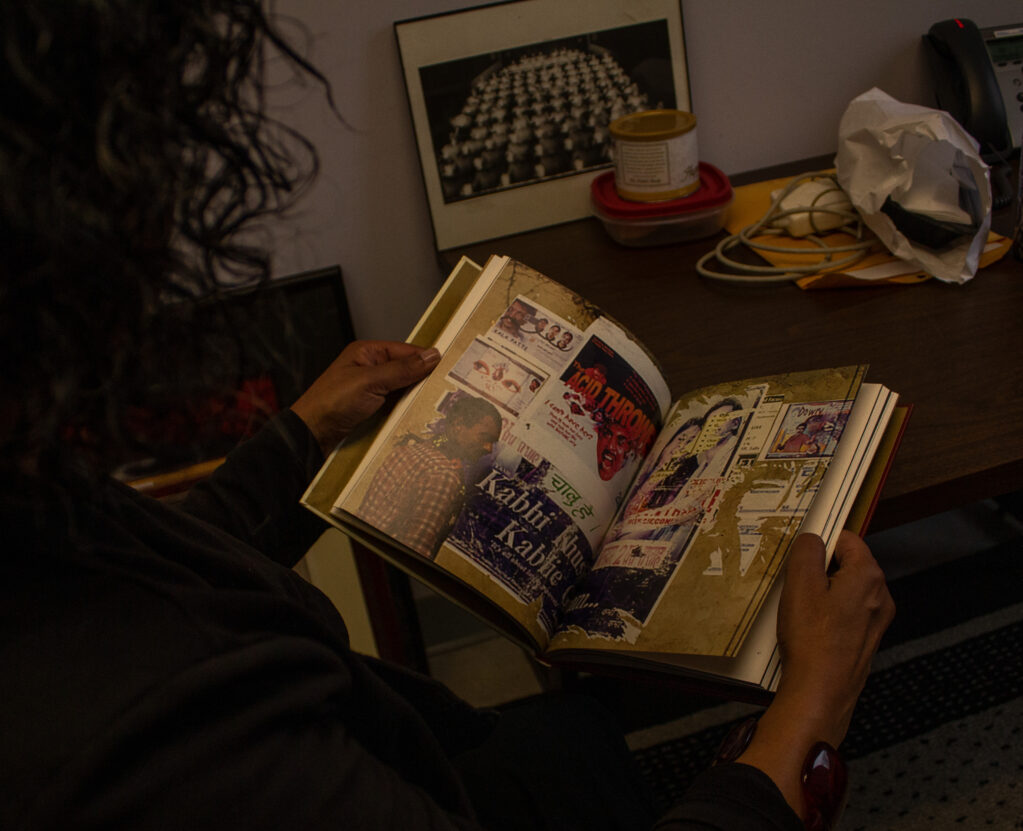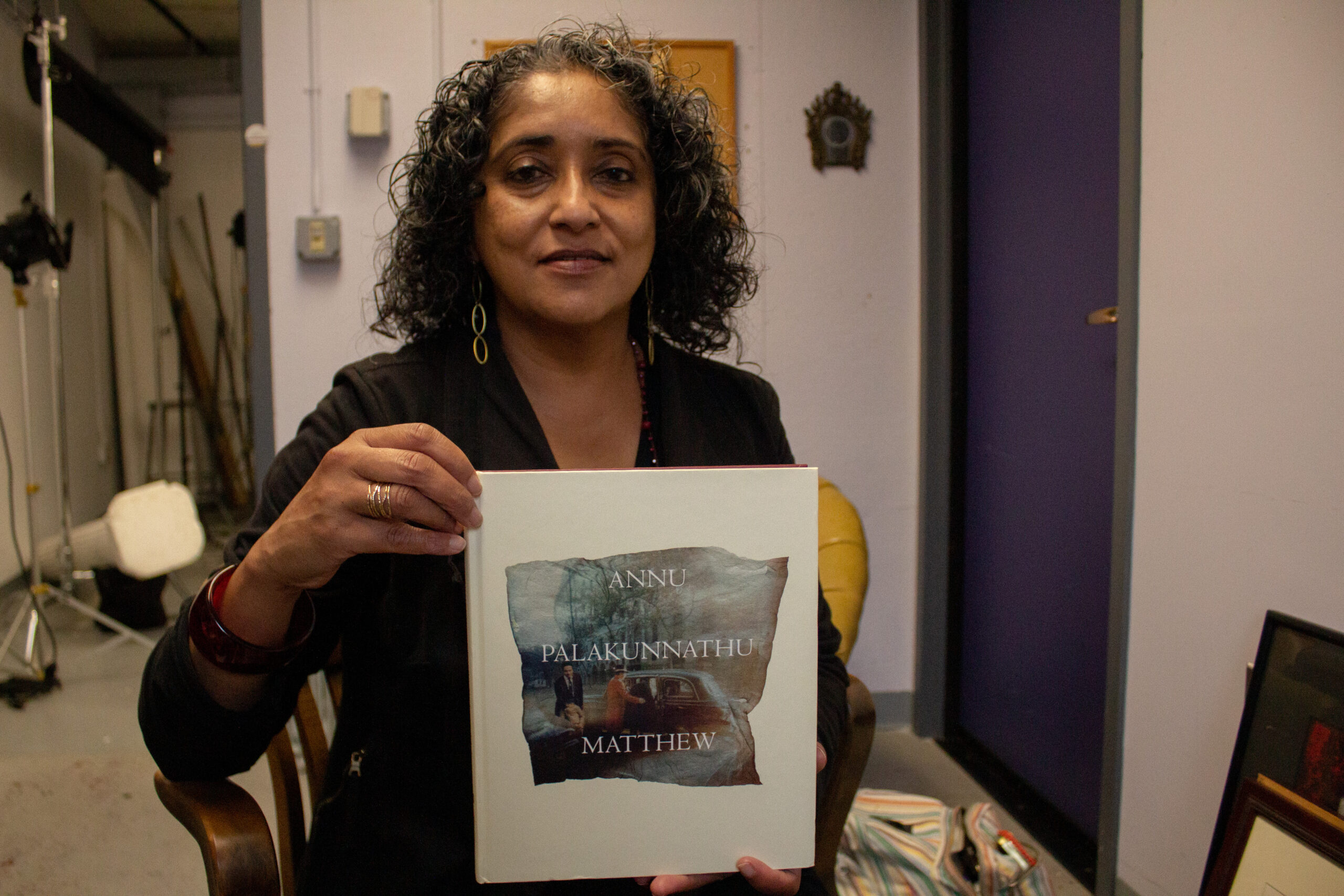Professor of photography Annu Palakunnathu Matthew’s book “The Answers Take Time” is set to hit shelves this month. PHOTO CREDIT: Maddie Bataille | Photo Editor
When she was young, Annu Palakunnathu Matthew lost her father. The experience of losing a loved one shaped her, and she found herself drawn to honoring the past.
Even though she originally went to school to study mathematics, Palakunnathu Matthew changed her major and became an artist.
This December, the University of Rhode Island professor of photography is expected to have her first book published, entitled “The Answers Take Time.”

“While curating the work I wanted to include,” said Palakunnathu Matthew, “my publisher pointed out that because I had lost my father early, that experience shaped my art.”
In her book, she includes art dedicated to her journey to “shape the politics of remembrance.”
In these works, she honors forgotten soldiers on installation work in a graveyard and produces stories for families to remember their past.
When working with these families, she is invited into their homes and listens to fond memories of loved ones. She uses old photos from a family album to recreate images. Then transforms the images to show grandchildren, parents, and grandparents through generations. Mimicking this remembrance, the photos and the stories are all personal.
Palakunnathu Matthew’s book, which is a retrospective of her work over the past 20 years, expands beyond the life she has lived but includes the experiences of others and the past.

Palakunnathu Matthew said that her book ranges from still life, which started her career, to more recent installations of her work.
A combination of writing and photography, her book is a compilation of essays from academics who have written about her and her own process for her art. She described the experience as a discussion through the pages.
“I think for a lot of artists, it’s a dream to have a book,” Palakunnathu Matthew said.
She explained that since art is based on installations, a book is a way for these works to become more permanent.
“I think it’s important for artists to be able to put their work in a more permanent format like a book,” fourth-year art student, Rylie Bessette, said.
“When I started photography, I wanted to become a photojournalist,” Palakunnathu Matthew said looking over with a sly smile, “but I don’t have the personality for one.”
Her dreams had led her to naturally become more focused on the socio-political aspects of art.
“I found a way that I’m comfortable talking about these social issues,” she said.
She began discussing some of her early work, where she satirized Bollywood posters using Photoshop and put the posters back out on the street to make her own statements about the industry.
Palakunnathu Matthew said that “art can play a role in shifting perspectives.” While we are living in an increasingly polarizing world, not everything is black and white, she explained. Visual installation is the gray area that pulls people in, according to her.

“It helps them shift their perspectives and consider other points of view,” Palakunnathu Matthew said.
Putting artwork into pages is very different from the work she usually sets out to do. However, she said that her publisher included little surprises throughout the pages.
“These gold prints are going beyond the traditional book,” she said, flipping through her book. “It excites me that I am able to bring some of what I do in an installation into the two-dimensional aspect of a book.”
From pictures to pages, Palakunnathu Matthew has brought her work as a photographer and humanitarian to life through memories.




